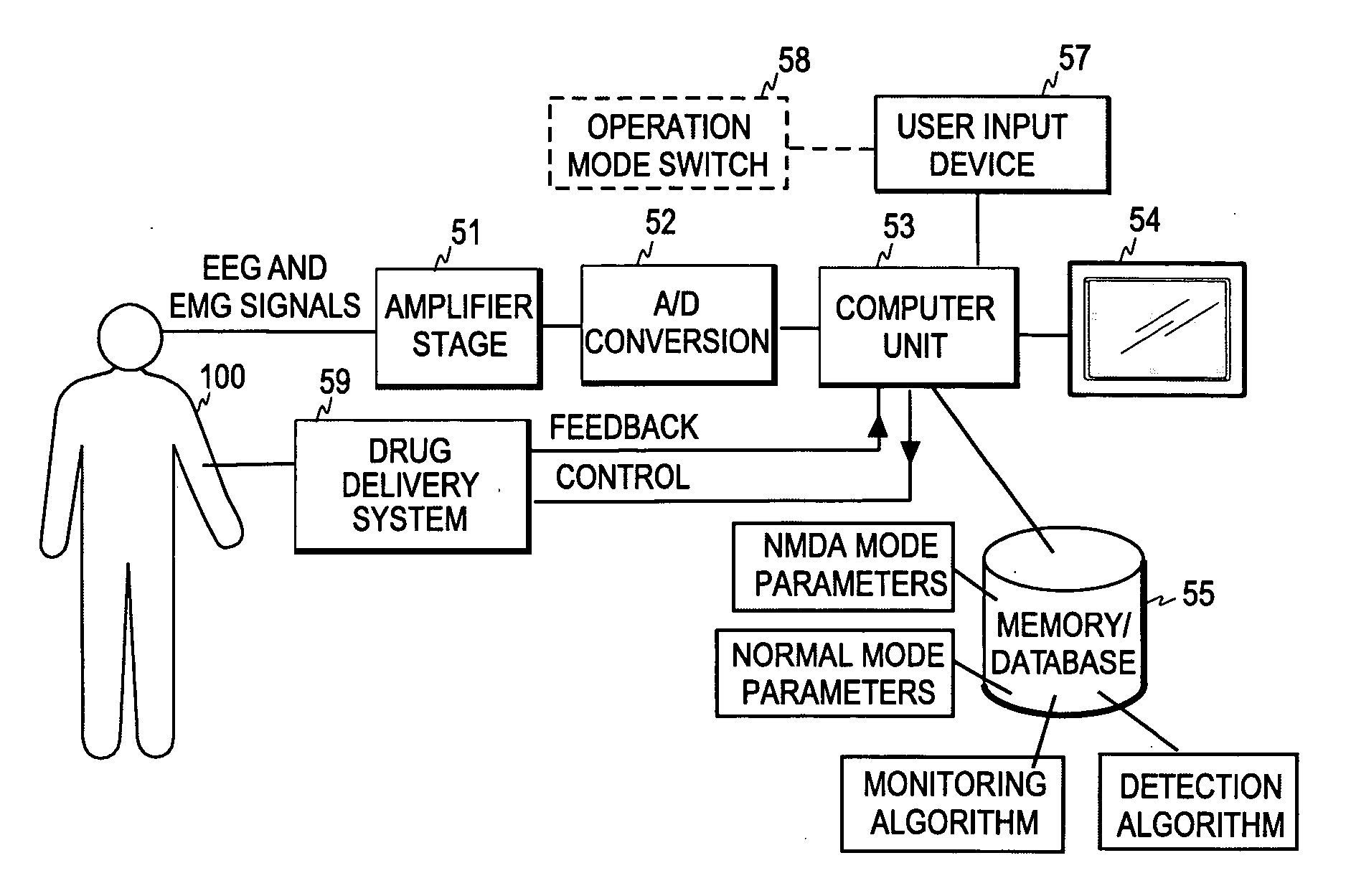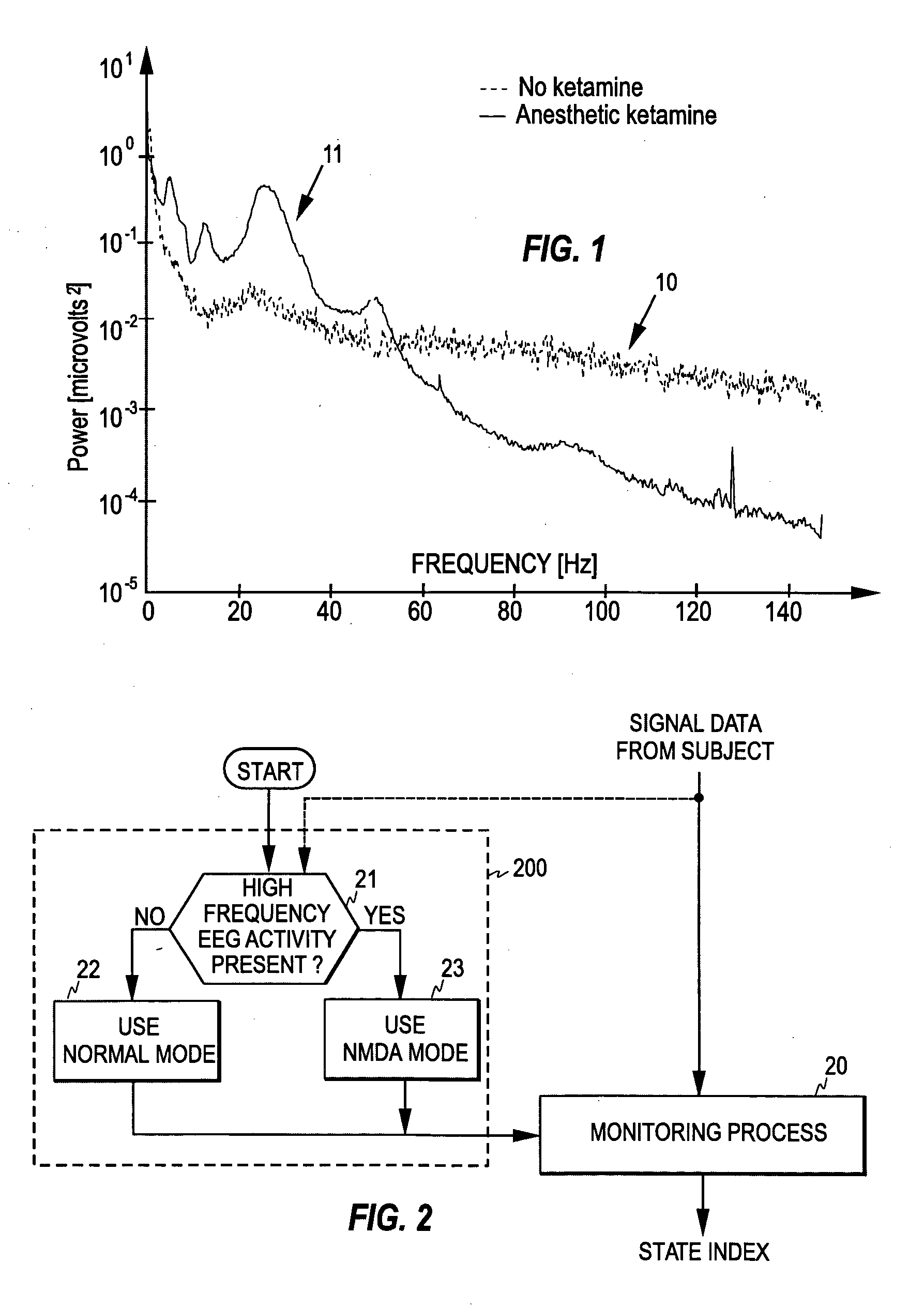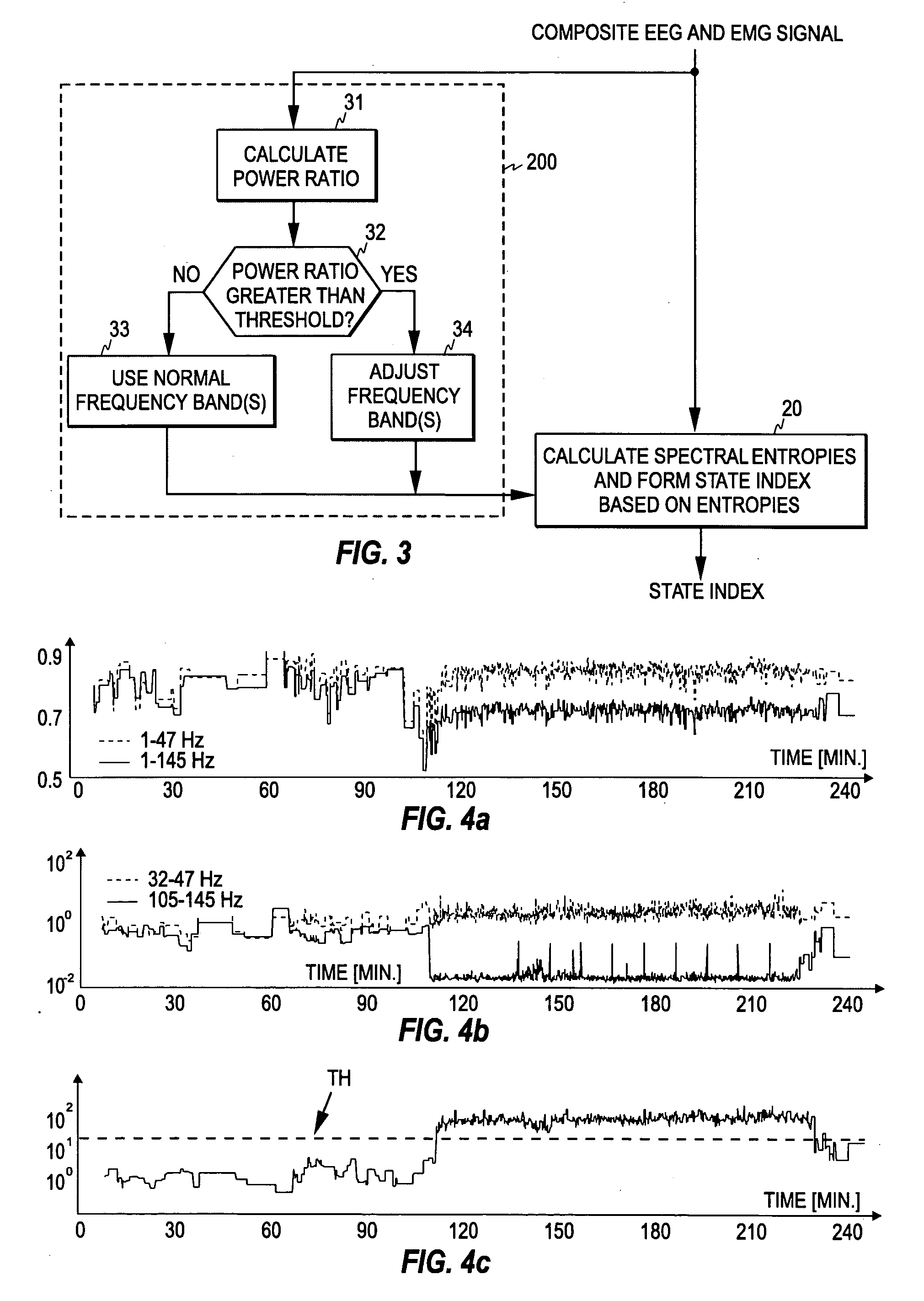Monitoring of the cerebral state of a subject
a technology of brain state and subject, applied in the field of monitoring of the brain state of a subject, can solve the problems of post-traumatic stress disorder, difficult to select the optimal pain management strategy later, exposure to unwanted side effects, etc., and achieve the effect of improving reliability
- Summary
- Abstract
- Description
- Claims
- Application Information
AI Technical Summary
Benefits of technology
Problems solved by technology
Method used
Image
Examples
Embodiment Construction
[0032]FIG. 1 illustrates the problem related to the use of NMDA antagonists for producing anesthesia. The figure shows two power spectra analysed from S-ketamine anesthesia. The first power spectrum 10 is obtained when ketamine is not yet administered (i.e. the patient is still awake), while the second power spectrum 11 is obtained during ketamine anesthesia from the same patient. As can be seen from the figure, the spectrum above about 30 Hz is almost flat in the logarithmic scale when ketamine is not administered. During the ketamine anesthesia, the spectrum in turn shows a clear power increase in the frequency range below about 80 Hz, which is due to the high frequency EEG activity induced by ketamine.
[0033]FIG. 2 illustrates the control principle of the present invention. In the present invention, the operation mode of the monitoring process 20 that calculates a measure of the level of hypnosis (or the depth of anesthesia) is controlled according to whether the signal data obta...
PUM
 Login to View More
Login to View More Abstract
Description
Claims
Application Information
 Login to View More
Login to View More - R&D
- Intellectual Property
- Life Sciences
- Materials
- Tech Scout
- Unparalleled Data Quality
- Higher Quality Content
- 60% Fewer Hallucinations
Browse by: Latest US Patents, China's latest patents, Technical Efficacy Thesaurus, Application Domain, Technology Topic, Popular Technical Reports.
© 2025 PatSnap. All rights reserved.Legal|Privacy policy|Modern Slavery Act Transparency Statement|Sitemap|About US| Contact US: help@patsnap.com



